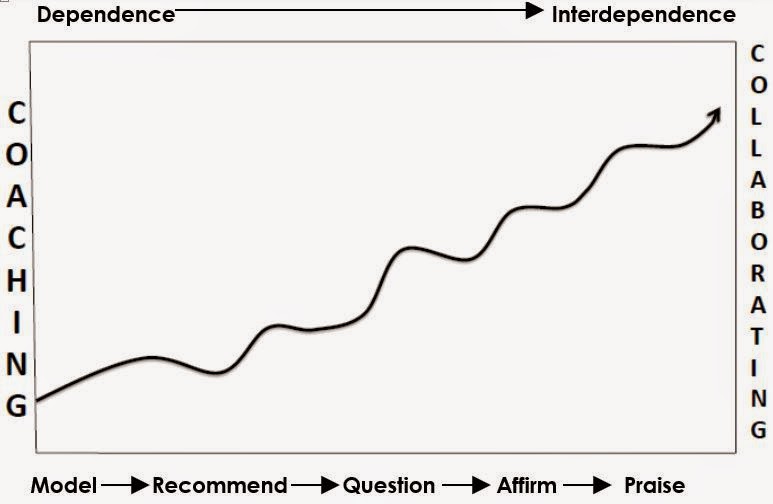As
educators, we’re familiar with use of the term “least restrictive environment”
when it comes to students with IEPs. But have we thought about it in terms of the
teachers we mentor and coach?
Perhaps
you’ve seen this play out at your school. Although some teachers are required
to follow the curriculum to the letter, the principal is fine with other
teachers operating behind closed doors (ignoring pacing guides, required
material, etc.) because they’ve proven that their students will achieve.
Now
let’s think about what “least restrictive environment” means for mentoring and coaching.
Novices may need a more restrictive
environment: doing exactly what you recommend so that students receive solid
instruction. We make the environment less restrictive for them as they show what they’re capable of. More expertise means more freedom. It should also mean
a change in our coaching conversations.
As
teachers become more proficient, we can refine our mentoring. We recommend less
and ask questions more. And we can focus our questions on aspects of
instruction where teachers get the most bang for their buck.
One
of the most important aspects of good instruction, across all disciplines and
grade levels, is the inclusion of talk. Asking good questions and facilitating
discussions that involve all learners enhances student learning. This week, I talked with coaches about how
they were helping teachers improve their discussion skills. Their responses
demonstrated a range of coaching moves, differentiated to match the needs of
the teachers they were working with.
One
mentor gave both a resource and a recommendation. She gave the teacher a
depth-of-knowledge chart and encouraged her to use the chart to help her
formulate good questions. She suggested the teacher plan questions in advance
and write them on her lesson plans. These resources and recommendations
provided strong scaffolding for the teacher as she worked to improve her class
discussions.
Similarly,
another coach suggested that questions be prepared ahead of time and encouraged
use of text-dependent questions during a read-aloud. Her specific recommendations provided a focus
for an upcoming lesson.
Another
coach made a recommendation that the teacher call on the quiet students. After
the teacher put this into action, the coach followed up by asking, “What do you
notice about their answers?” This combination of recommending and questioning
increased the teacher’s responsibility, encouraging reflection that supported
future decision making.
A
thought-provoking question was asked by the coach of a teacher who was more
proficient in leading class discussions. This coach asked, “How do you choose
who to ask?” Her question prompted thoughtful reflection on the part of the
teacher – introspection that led her to refine this decision-making process that
happens almost instantaneously.
From
providing resources and recommendations to making specific recommendations and
asking questions, the coaches' support was differentiated to give the “least restrictive” coaching that would result in improved
classroom discourse.
What’s
the least restrictive environment for the teachers you are working with? Just
like students with IEP’s, it will be different for each and every one!
This week, you might want to
take a look at:
NCTE
Student Writing Awards: February 13 is the deadline!
http://www.ncte.org/awards/student/pyw?roi=echo4-29040126188-55323816-b52e9f12f52705f0dcfec47ae8000498&utm_source=29532509&utm_medium=Email&utm_campaign=General (for eight graders)
http://www.ncte.org/awards/student/aa?roi=echo4-29040126188-55323817-24c1762acaccc9279b77704edacd3e8d&utm_source=29532509&utm_medium=Email&utm_campaign=General (for high school juniors)
The
A-B-Cs of Giving Feedback to a Colleague:
Honor your colleagues and their
professional choice by sharing the sentiments in this blog post:
A
video about having students create vocabulary paint chips:
A
thoughtful discussion with Charlotte Danielson (author of Frameworks for Teaching) about the Common Core State Standards
(just click on the X to close the annoying pop-up):
That’s it for this week. Happy coaching!


No comments:
Post a Comment